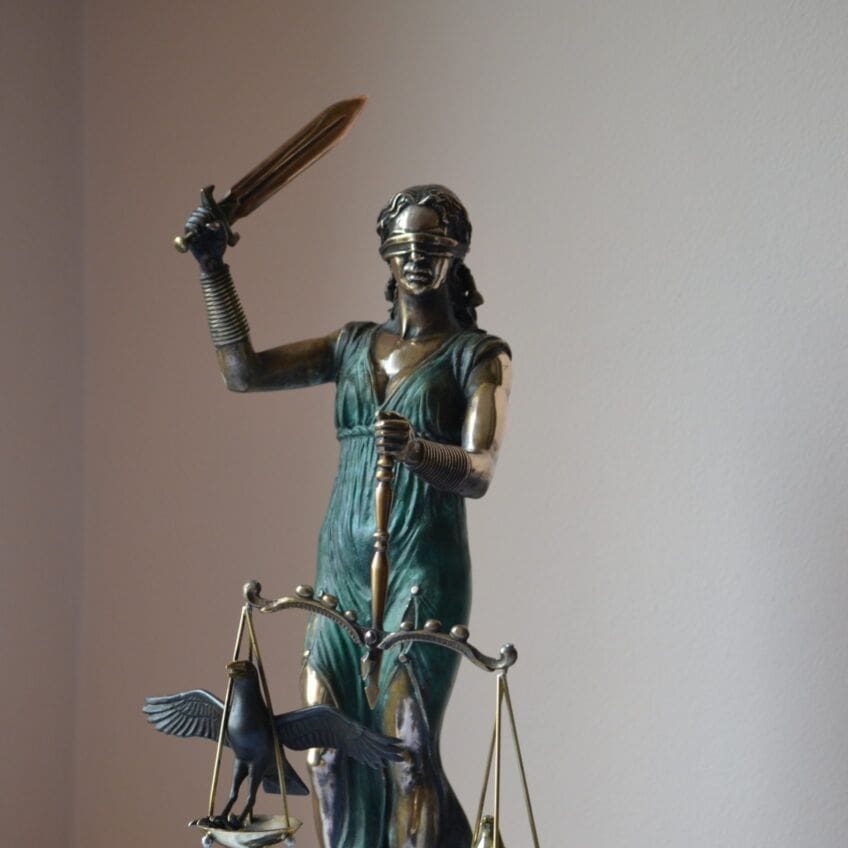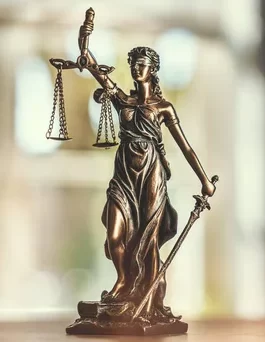In recent times, the Supreme Court of India has become a centre of attention— for mostly the right reasons. With the tenure of Justice DY Chandrachud as the Chief Justice of India (CJI), we’ve witnessed a wave of transformation. From landmark judgments to progressive social stances, his era is setting new standards for justice in India. But right now, what’s stealing the spotlight is the unveiling of a new statue of Lady Justice at the Supreme Court’s library by the CJI. Since not much is shared about the thought behind it, we’d go forward with what we believe it symbolises.
What is Lady Justice?
Lady Justice is a symbolic representation of a Justice system. Traditionally, she is depicted wearing a blindfold, dressed in Western attire, holding a sword in one hand and scales in the other (The Victoria model). This familiar image has roots in ancient Greek and Roman symbols, which made its way into the Indian judicial system during British colonial rule. Seen in courts & legal institutes around the world, Lady Justice represents the values of fairness and impartiality. However, India has given this symbol a fresh twist, and in my opinion, it’s about time!
So, what’s so special about this statue? Well, for starters, she’s dressed in a saree. And while this isn’t entirely new (Bangladesh did something similar a few years back but removed the statue due to severe backlash), seeing Lady Justice in a saree right here in our Supreme Court feels like such a powerful statement, as if we’re seeing Bharat Mata herself. It’s indeed a beautiful representation of our culture and identity.

But it’s not just the saree that’s different. Unlike the usual depiction where her eyes are covered by a blindfold, this statue has her eyes wide open. She’s also holding a book—symbolising the Constitution of India—instead of the typical sword. To me, like many others, this feels like a shift away from that old colonial image, towards something that reflects who we are today.
It is a popular saying in the field of law that justice must not only be done, it must be seen as done. The idea is to retain the hope & faith of millions of Indians out there in the judicial system, even though the current reality hits off-road. Symbolism plays an important role in imparting this idea. But we surely need to ask ourselves about the way forward in minimizing the stark reality between the existing judicial system & what we aim for.
The Traditional Symbol: Justice, Blindfolded and Armed
In law school, as I’ve seen, Lady Justice is depicted with a blindfold, symbolizing impartiality. She holds a sword in one hand, while her other hand balances a pair of scales. This image has long stood for the idea that justice should be swift and unbiased, unclouded by prejudice or external influence.
If you look closely at the traditional depiction, the intricacies tell an even deeper story. Lady Justice is often shown wearing a flowing gown, standing tall with her blindfold securely in place. Her right hand is raised high, holding the sword as a looming threat to wrongdoers, symbolizing the punishment awaiting those who are found guilty. In contrast, her left hand, slightly raised, holds the scales—measuring the arguments and evidence from the parties before the court (scroll to see the picture).
As per sources online, it was since the 16th century that Lady Justice has often been depicted wearing a blindfold. The blindfold was originally a satirical addition intended to show Justice as blind to the injustice carried on before her, but it has been reinterpreted over time and is now understood to represent impartiality, the ideal that justice should be applied without regard to wealth, power, or other status.
Justice Fali Nariman, in his autobiography, Before Memory Fades (which, by the way, is an incredible read if you’re interested in law), mentions two types of Lady Justice. Firstly, it’s the Victorian ideal of justice. He mentions how it comes from the border design of Queen Victoria’s Royal Charter, which set up the Bombay High Court way back in 1862. But as he points out, there’s a flaw in this idea—how can Lady Justice fairly wield her sword or weigh the scales if her eyes are covered? Would it not give way to striking the innocent party instead? And would the delay involved in the process of arriving at a decision not freeze the arms of the Lady holding the sword & pair of scales? And honestly, that’s something too deep in symbolism I did not think about till then.


The Indian Take on Lady Justice
In India, we’ve had our own twist on this symbol. Take the Bombay High Court, for example, where there’s a statue of Lady Justice with her eyes open, no blindfold in sight (couldn’t find the specific picture). Here, the idea is that justice isn’t blind—it’s aware, it’s fair, and it takes its time to ensure the right person is held accountable. That makes sense, doesn’t it? After all, how can you serve justice if you can’t even see what’s happening in front of you?
Justice Nariman notes in his memoir, that standing in front of the Gothic building of the Bombay High Court, opposite the Oval Maidan (at Churchgate), one can see two tall conical towers above the porch. The northern tower depicts the Indian ideal of justice, while the southern tower depicts the figure of mercy, the handmaiden of justice. In this Indian ideal of justice, the lady is not blindfolded.
He says that our version of Lady Justice stands with her sword resting at her feet, so she’s ready to act but not rushing into things. This way the necessary delay involved in a trial doesn’t freeze her shoulders. She looks at the scales, weighs the evidence carefully, and only then makes her move. It’s a far more thoughtful approach, one that feels closer to the idea of real justice.
A Step Forward towards today’s Bharat
Coming back to the newly unveiled statue at the Supreme Court, it feels like we’re stepping into a new era. This isn’t just about changing a statue—it’s about changing how we see justice itself. We’re saying that justice in India is rooted in our Constitution, in fairness, and in transparency. The open eyes of Lady Justice symbolize that justice must be seen; its supposed to be thoughtful and aware of the world around us. And isn’t that exactly what we need in today’s world?
This new version of Lady Justice is a reflection of the India we’re becoming—a country that’s not only leaving behind its colonial past but also embracing its cultural roots and standing strong in its own identity. It’s about recognizing that our vision of justice is one that’s not just for today, but for the India we’re building for the future.
So, the next time you see Lady Justice, take a moment to think about what it really stands for. I hope that, over time, the gap between the ideal of justice we imagine and the reality we experience narrows. For me, Lady Justice now serves as a reminder that justice isn’t just about laws—it’s about the values we hold dear, the fairness we strive for, and the progress we continue to chase.

This justice lady is a “Hindu” goddess complete with a bindi and a jhumka ( apart from sari and bangles).
India is becoming a “Hindu” rastra whether you like it or not.
Should it be top priority for judiciary- “No”
( I am thinking whether Modiji went to CJI home with this offer before CJI got retired )